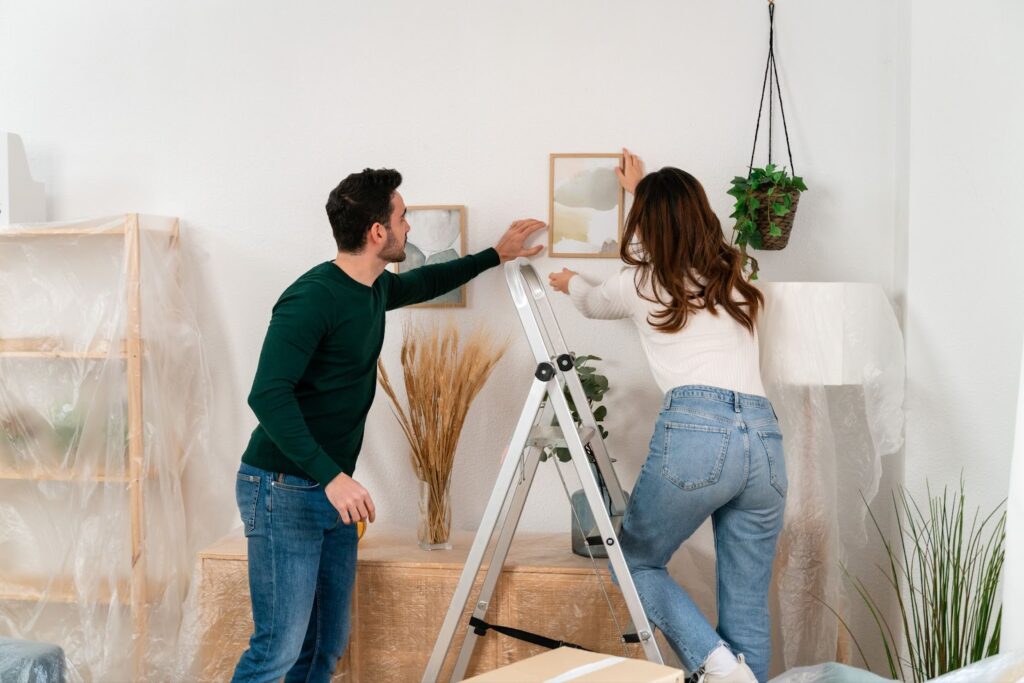Whether you’re moving in with a partner, a roommate or two, or you personally just like too many different styles, it can be hard to marry up more than one design style, particularly if they’re conflicting. It’s every interior design-loving person’s nightmare to try to find a balance between farmhouse cottage and modern minimalist.
As anyone who’s lived with someone else can tell you, mixing design styles can be fraught. If you’re sharing the space, they may hate the handmade quilt that you adore and want to keep on the couch. And you might despise the grey-toned wood finish that features on every item of furniture they own. But while it may be difficult to make conflicting design styles work together, it is possible.
Identify Non-negotiables
Before you start making demands about what can and can’t stay in the house, talk to your new roomie (or have a stern conversation with yourself) and work out which items absolutely must stay in the house. It may be a statement piece that you saved up for, like an emerald green velvet couch, or something special and nostalgic, like the dresser you inherited from your grandparents. Whatever it is, have an honest conversation and identify the whats and the whys of your most precious items.
Once you’ve both had your turn of choosing which items absolutely must stay, you can move into the next stages more honestly and with fewer chances of upsetting or offending each other when you mention how much you hate the ornate frame of the mirror they are deeply attached to.
Research and Observation
If you want to have the best chance of seamlessly combining design styles, you need to have the clearest vision of what you’re getting yourself into. Look at all of your combined belongings. Take into account soft furnishings, so blankets, cushions, curtains, bedding, etc., and any decor items, as well as the big-ticket furniture pieces. Start Pinterest boards and pin interior designs that you like. Stay open-minded about this part, and pin whatever speaks to you without trying too hard to stay in a particular box. Then compare and contrast.
Between your existing items, your non-negotiables, and your Pinterest boards, you are sure to find some similarities that you can pull out. It may be colours or textures, warm or cool tones, wood finishes or couch shapes, even the type of art you both like, or the style of furniture pieces. Once you’ve identified the similarities, you can start blending the differences more seamlessly.

Pick Your Colours
In interior design, there’s a rule known as the 70/20/10 rule. Basically, you look at your inspiration images and identify the three most prominent colours. 70% of the room should be one colour, the walls or floors, etc., 20% of the room is a second, primary accent colour for things like furniture and upholstery, and the final 10% is your accents, key decor items and splashes of colour through artworks.
Referring back to your Pinterest images can help you work out where your colour preferences overlap. If you’re looking at these images, struggling to pinpoint where the similarities are, pay attention to paint tones. Maybe you both lean more towards warm undertones, even though the colours themselves are different. Maybe one of you prefers cooler primary colours, but your accent colours are warmer. For the person who prefers warm colours, consider if keeping your 70% cool, then using the remaining 30% to bring in the warmth, would be a good compromise.
Devil is in the Details
Here’s where things get interesting. So you’ve discussed your non-negotiables, got your inspiration pictures, and you’ve identified your colours. The next step is to pay attention to the finer details. Things like a shared love of open shelving or book storage, or you’ve both chosen images with slimline couches, or tufted details. Maybe you both prefer neutral accents, with pops of colour incorporated in the artwork or photos.
For instance, it can be easy to get bogged down in the differences between contemporary coastal wall art and geometric line art, but when you break down the details, both styles feature clean lines, contrasting colours, and create powerful impacts in a room. Despite their differences, the similarities in these two design styles are starting to come to life.
By identifying where your tastes overlap, you’ll have a better chance at creating a space where you both feel happy and at home, and where the aesthetic clashes are kept to a minimum.
Get to Decorating
Now is the time to put all your hard work to the test. If this is a more permanent arrangement, like moving in with a partner, it may be a good idea to go furniture shopping together. Selling any unwanted items on Facebook Marketplace or Gumtree can help ease the costs of buying all new stuff, but bringing in some new items that speak to both of you, rather than trying to force your mismatched styles together, will result in a more seamless, cohesive look.
If you’re just trying to make the best of a sharehouse living room, committing to a brand new couch may not be the best call. Go op-shopping together and hunt through the decor items for art you both love, little knick-knacks to decorate your space, or even things like table cloths or teatowels, can help create a shared space that feels right.
Moving in with someone with opposite tastes to you doesn’t have to be as hard as it may appear at first. With a little bit of work, open communication and collaboration, you can create a beautiful space that feels like home.








